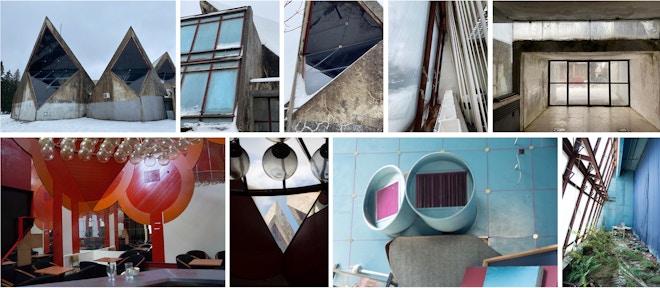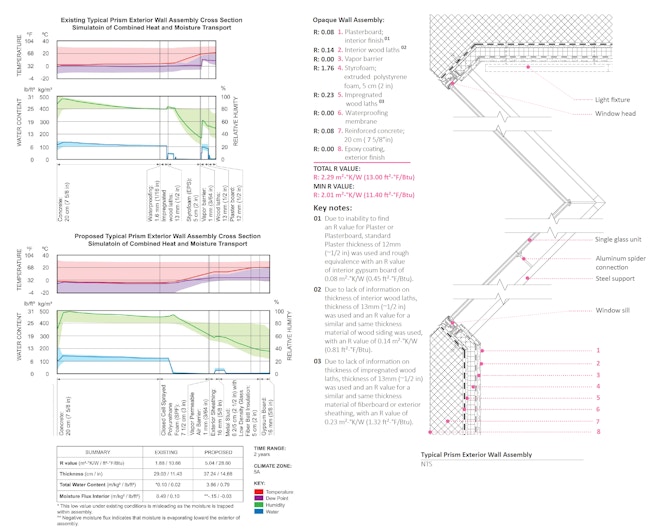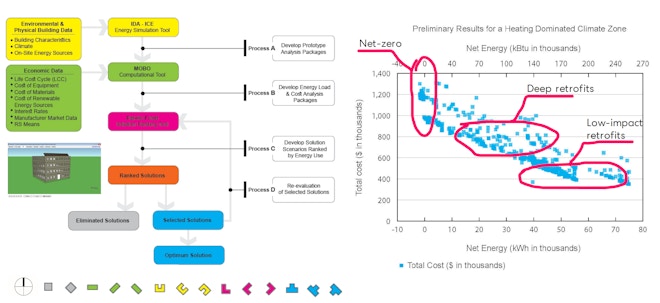
Research and Life-Long Learning Opportunities for Practitioners: Perspectives of Professional PhD Students
This article is based on an interview with two of my current PhD students, Sunčića (Sunny) Milošević and Hossam Mahmoud. Sunny is an architectural designer and Hossam is a practicing mechanical engineer. Both decided to return to school after almost a decade of professional experience in the AEC industry. Specifically, they wished to enroll into a doctoral program because they were seeking ways to integrate research into their work (particularly building technology and energy-efficiency research).
Making this shift is not an easy decision, but our industry is in desperate need of professionals that are trained to conduct research. Therefore, this article provides perspectives of two professionals that embarked into advanced education and research training, aiming to demystify the transition process and encourage other professionals that are considering research careers and life-long learning opportunities.
AA: What is your professional background and why did you choose to obtain a PhD as a professional?
SM: I am from Montenegro, which when I came to the United States as a child, was still part of the former Yugoslavia. I studied architecture at the University of Illinois in Urbana-Champaign, where I obtained an undergraduate degree. Being an immigrant, I felt obligated to excel in all my classes, so selecting architecture felt random at that time – I remember looking at the list of majors and crossing out fields that I was not interested in at all to narrow down my selection. Looking back, it was the perfect choice since it helped me to embark into a rewarding career (technically and design-oriented). I began researching architecture of my former country during graduate studies at the University of Cincinnati. Specifically, I investigated Yugoslavian modernism and its cultural and historical significance. After graduating from the University of Cincinnati with an M.Arch. degree, I started working for a well-regarded Chicago firm and had stayed in the profession working mostly on new construction, large-scale buildings for almost 10 years. But I remained interested in sustainable retrofitting strategies for historically significant buildings. So, pursuing PhD studies, even though it finally occurred a decade later, was not a sudden realization or decision. It just took long time to commit to this decision, to finally pursue a PhD on the topic that I have been interested in for years.
MH: I am originally from Cairo, Egypt. I work as a mechanical engineer at an energy efficiency consulting firm in Boston, Rise Engineering. I have been working for more than seven years, and my background is in renewable energy systems and energy efficiency in buildings. My current professional work focuses on sustainable design in commercial, industrial, and municipal buildings. I realized that one of the main challenges currently facing our profession is to find optimal and cost-effective strategies for designing net-zero energy buildings. Thus, I decided to enroll into a PhD program and focus on this research topic. The PhD has really helped me professionally as well because it gave me certain insights that I did not have at work. Specifically, I started looking into a broad context of net-zero energy retrofits for existing commercial buildings, and methods for cost-optimal solutions.

Figure 1: Sunny’s ongoing research work focuses on sustainable retrofit strategies for historically significant modernist buildings.

Figure 2: Facade analysis for a case study building, conducted by Sunny. This research will be published as part of the Architectural Research Centers Consortium (ARCC) 2021 Conference Proceedings.
AA: What were some of the most interesting and fascinating things for you as a professional going back to school? What did you find exciting?
SM: One of the most exciting things was going to be the physical experience of going back to school, to be immersed into the classroom, and meet new colleagues with diverse experiences. However, as none of us could have imagined, the pandemic has shifted the educational experience to a virtual one. So, it has been a little different, but the online education has provided a platform for wider and more accessible participation. In addition, I was able to take one course early, Sustainable and High Performance Facades, during the summer, as a professional and not yet a student, which was open to both students and professionals. That was a very rewarding, collaborative experience, and the first course of this kind that you taught at the University of Massachusetts Amherst.
I am also excited to have dedicated time to read, write and conduct research again. In the architectural practice, we work toward solutions to problems very fast and in that race with time we often get caught up on our immediate professional needs. Having time to digest the broad significance of work has been internally rewarding. For example, I was very excited to take a class on climate change and to learn about the significance that buildings have on the environment, and to learn how social and economic equity, in addition to environmental equity, are important. It may sound silly, as this was just one graduate course example, but it offered an additional lens through which to critically assess our ongoing projects and design decisions in architecture, and to realize the sheer responsibility we have in incentivizing and pushing for policy change.
HM: I think going back to the classroom and classroom discussions are very exciting. The different views, ideas and perspectives that I got exposed to in different classes have broadened my horizons. Professionally, you sometimes get caught in a certain way of doing things, so I think the discussions in the classroom often encourage out-of-the-box ideas. I also have been exposed to subjects that I have not been exposed to professionally, but they still impact my work directly, such as the Sustainable and High Performance Facades class. Moreover, taking classes with students from different disciplines helped me to understand the shared goals and tasks, and how to improve collaboration in future projects. In addition, conducting research has allowed me to stay abreast of the latest developments and techniques in the field of sustainable building design which I try to bring to my work.
AA: What were some of the most difficult aspects or challenges that you experienced while coming back to school?
SM: Some of the challenges were reading quickly and critically, writing extensively and patiently conducting research. In the architectural profession, we generate ideas quickly and spend extensive time developing sophisticated drawings and images. We do not necessarily write or conduct scientific research, so documentation and learning about scientific research were challenging.
I had done extensive writing and some research as part of undergraduate and graduate architecture school, but it was not the same kind of research. Referring to your Research Methods for the Architectural Profession book, the way we have conducted research for even a thesis project, for example, was very different than conducting research for experimental studies and data analysis. We investigated precedents, history, theory, etc., and conducted literature reviews, which might influence our design decisions or inspire us to design in a specific direction. However, learning about research as a scientific, systematic process was new, as it requires a specific testable methodology for specific research questions. It also requires patient collection of data and results, from which we draw conclusions. However, the process has also been very rewarding and provides a new skillset that can be applied to new research projects (regardless if they are conducted in an academic or professional setting).
HM: Managing time between work and school is the most challenging aspect; however, it is not impossible. I think that having a workplace that understands the value of PhD studies, and an advisor that understand the challenges and advantages of doing both are helpful. The second big challenge is having the patience to embark on a long-term research study, since this takes time, but nevertheless very rewarding

Figure 3: Hossam’s ongoing research work, focusing on optimization of net-zero energy design retrofit strategies for commercial buildings. This research will be published as part of the Architectural Research Centers Consortium (ARCC) 2021 Conference Proceedings.
AA: Regardless of their field (engineering, architectural or construction), for somebody who is a professional and might be interested in obtaining a PhD, what type of advice would you give to that person?
SM: As I noted earlier, enrolling into a PhD program was something that I had wished to pursue for a very long time. There are several reasons, or fears, which led to hesitancies in finally making that decision. However, it was the best decision I have made and was, perhaps, meant to happen at this stage of my professional career and life. As I have said, some of the societal issues and challenges that I have been learning about almost require that professional background to truly understand the impact and gaps within our profession.
I kept postponing this decision out of financial and life-stage reasons. Being an immigrant, I was eager to quickly start working and to gain financial stability and independence ten years ago. Then, some years later, I had a mortgage responsibility, and started thinking about my age as a woman and considering a family. I personally felt afraid to pursue my dream this “late” in life and to potentially threaten or impede my financial stability and lifestyle. My advice for anyone who wishes to embark into PhD would be to not be afraid for any of potentially similar reasons as I had because balancing responsibilities is possible.
It’s important to assess current finances, investigate universities and their research, and most significantly to seek mentor figures who have similar research interests. Also, its important to speak with leadership in your current job, to assess potential flexibility in managing full or reduced hours remotely, and a potential sponsorship. That open communication and assessment of all factors is critical. Once you get going, stars do align, and your passions can be realized especially if you choose a topic that aside from personal fulfillment, can add towards the practice of architecture academically, professionally, or both. This is still hard work, the difference being that I wake up excited to work on something that I really care about, and experience growth in that direction.
HM: My main advice is to not be scared or worried about going back to school. As long as you can manage your time and you have support within your workplace, you can continue to do both if you choose. In my opinion, some of the fear comes from the fact that we have been out of school for a while. We do not know how we will handle the experience. My second advice is to carefully choose an advisor that understands your professional background and your goals. Moreover, choosing a research topic that will directly impact your professional career is important. This provides a benefit where the research can benefit from professional perspective. Additionally, a researcher can bring the research experience to the professional world after completing the studies. My last advice would be to consider time management if you plan to continue working while pursuing doctoral studies.

Ajla Aksamija
Professor
University of Massachusetts Amherst

Suncica Milosevic
Research Assistant and Associate Instructor
University of Massachusetts Amherst

Hossam Mahmoud
University of Massachusetts Amherst
Looking for something specific?
Search our extensive library.
FTI’s SKINS email is the central source for the latest in building skin trends and research.
All emails include an unsubscribe link. You may opt out at any time. See our privacy policy.








